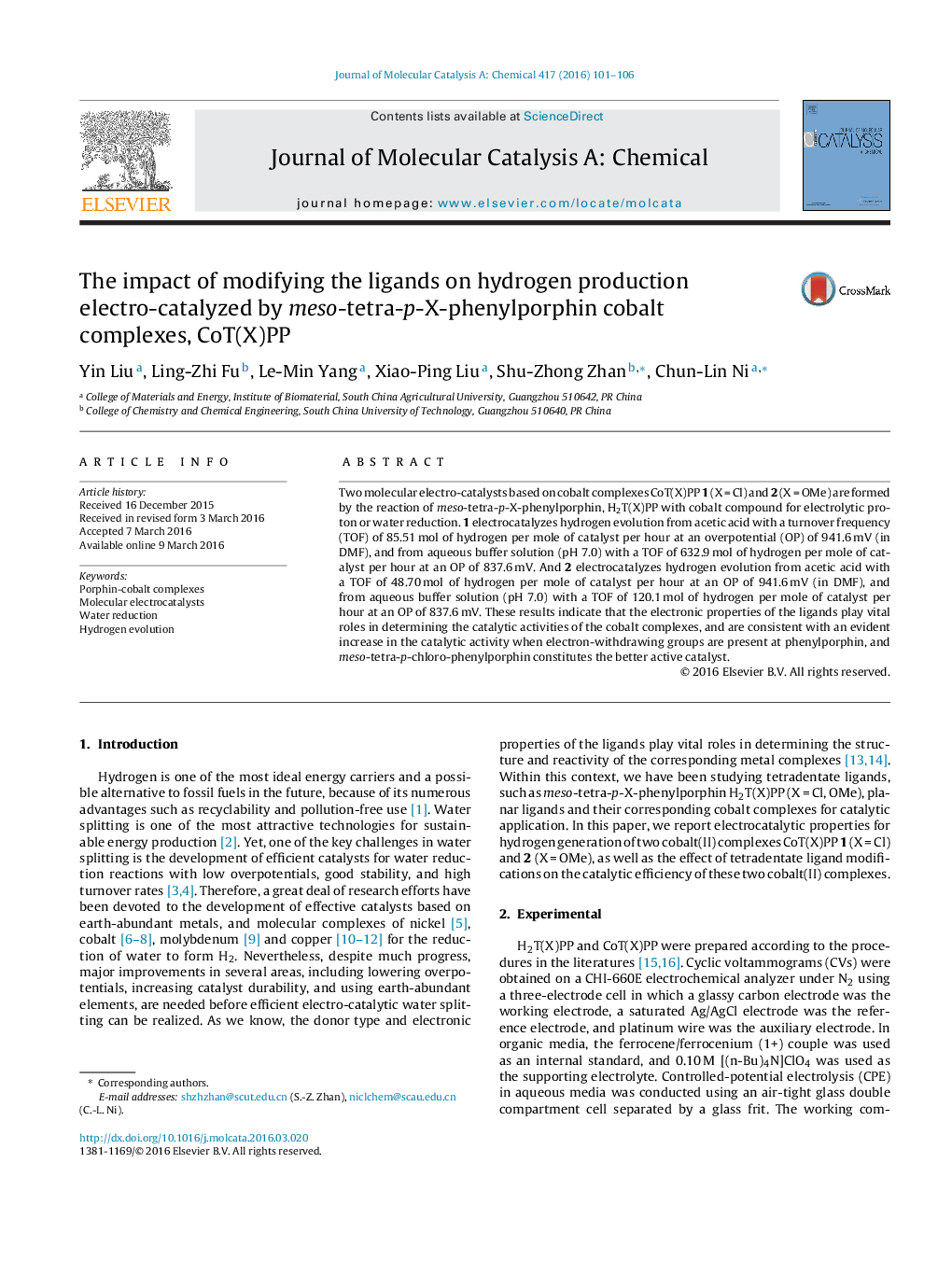| Article ID | Journal | Published Year | Pages | File Type |
|---|---|---|---|---|
| 64648 | Journal of Molecular Catalysis A: Chemical | 2016 | 6 Pages |
•Reaction of meso-tetra-p-X-phenylporphin, H2T(X)PP with cobalt compound afford CoT(Cl)PP (1) and CoT(OMe)PP (2).•Meso-tetra-p-chloro-phenylporphin, CoT(Cl)PP (1) constitutes the better active catalyst than CoT(OMe)PP (2).•The cobalt complexes with more positive CoII/I redox potentials show lower activity for hydrogen generation.
Two molecular electro-catalysts based on cobalt complexes CoT(X)PP 1 (X = Cl) and 2 (X = OMe) are formed by the reaction of meso-tetra-p-X-phenylporphin, H2T(X)PP with cobalt compound for electrolytic proton or water reduction. 1 electrocatalyzes hydrogen evolution from acetic acid with a turnover frequency (TOF) of 85.51 mol of hydrogen per mole of catalyst per hour at an overpotential (OP) of 941.6 mV (in DMF), and from aqueous buffer solution (pH 7.0) with a TOF of 632.9 mol of hydrogen per mole of catalyst per hour at an OP of 837.6 mV. And 2 electrocatalyzes hydrogen evolution from acetic acid with a TOF of 48.70 mol of hydrogen per mole of catalyst per hour at an OP of 941.6 mV (in DMF), and from aqueous buffer solution (pH 7.0) with a TOF of 120.1 mol of hydrogen per mole of catalyst per hour at an OP of 837.6 mV. These results indicate that the electronic properties of the ligands play vital roles in determining the catalytic activities of the cobalt complexes, and are consistent with an evident increase in the catalytic activity when electron-withdrawing groups are present at phenylporphin, and meso-tetra-p-chloro-phenylporphin constitutes the better active catalyst.
Graphical abstractFigure optionsDownload full-size imageDownload high-quality image (52 K)Download as PowerPoint slide
